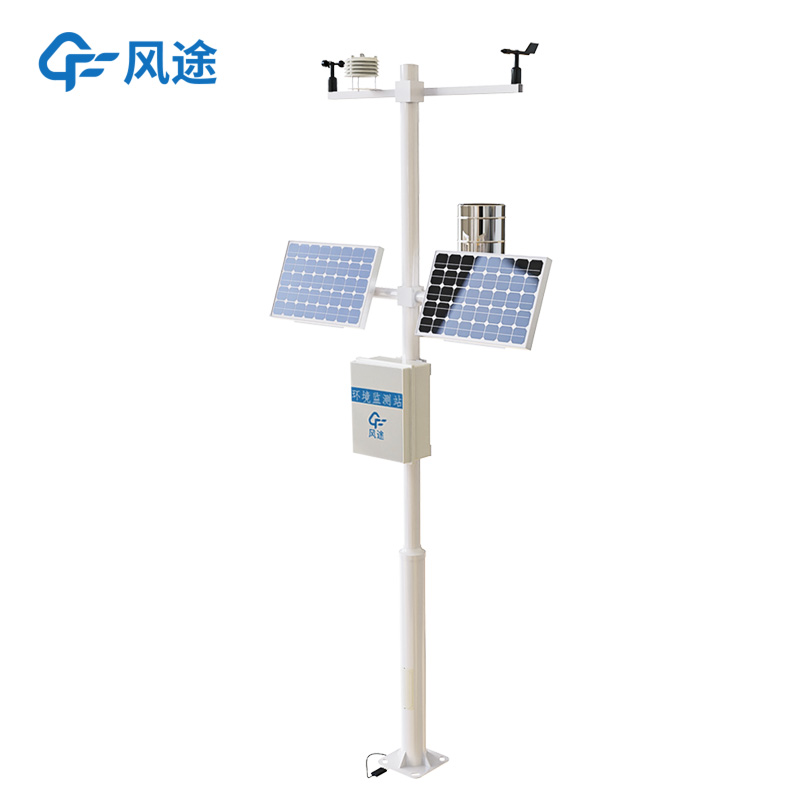In the field of modern agriculture, Agricultural Weather Stations are of great importance. They integrate various devices to comprehensively monitor meteorological and soil information, providing core support for the refined management of agricultural production.
Agricultural Weather Stations are equipped with a series of meteorological element monitoring devices with different functions. The wind speed sensor can accurately measure the wind speed, and the wind direction sensor can precisely determine the wind direction. With these data, farmers can understand the dynamics of the wind in advance and take wind - prevention measures in a timely manner, such as strengthening agricultural facilities and setting up wind - break belts, thus reducing the risk of damage to crops caused by strong winds.
Temperature, humidity, air pressure, rainfall, light, and ultraviolet sensors provide crucial information for agricultural production from different perspectives. The temperature and humidity sensors monitor the ambient temperature and humidity in real - time. Different crops have specific requirements for temperature and humidity at various growth stages. Based on these data, farmers can precisely control the greenhouse environment or carry out irrigation and ventilation operations reasonably.
The air pressure sensor helps predict weather trends by monitoring changes in atmospheric pressure, enabling farmers to arrange agricultural activities scientifically. The rainfall sensor accurately measures the amount of rainfall, allowing farmers to plan irrigation and drainage work scientifically and avoid the harm to crops caused by drought or flood.
The light sensor and the ultraviolet sensor work in tandem. The former monitors the light intensity and duration, while the latter measures the ultraviolet intensity. According to these data, farmers can implement shading or supplementary lighting measures according to the light requirements of different crops, not only meeting the needs of crop photosynthesis but also preventing excessive ultraviolet rays from harming the crops.
Soil conditions are crucial for crops. To this end, Agricultural Weather Stations are equipped with various soil parameter monitoring devices. The soil temperature sensor can detect the soil temperature at different depths, providing key evidence for the selection of crop sowing time and the analysis of root growth.
The soil humidity sensor provides real - time feedback on the soil moisture content, which is the core data for achieving precise irrigation. With this data, farmers can supply water as needed, ensuring that the soil humidity is maintained at a level suitable for crop growth, avoiding both water waste and the negative impact on crop growth due to excessive or insufficient moisture.
The soil nutrient sensor and the soil pH sensor play important roles in soil fertility management. The nutrient sensor can accurately analyze the content of nutrients such as nitrogen, phosphorus, and potassium in the soil, helping farmers develop a scientific and reasonable fertilization plan based on the soil fertility status, improving fertilizer utilization and reducing environmental pollution. The pH sensor measures the pH value of the soil, enabling farmers to understand the soil acidity and alkalinity, and then carry out soil improvement and planting planning according to the suitable soil pH for different crops.
In addition to the above - mentioned monitoring sensors, Agricultural Weather Stations also include several auxiliary devices. The data collector is responsible for collecting and storing the data monitored by various sensors, and conducting preliminary processing and analysis of these data, converting the raw data into valuable information and providing a data basis for subsequent decision - making.
The data transmission module transmits the data processed by the collector to the remote control center or user terminal via wireless or wired means. Whether it is a GPRS, 4G, or 5G module, it ensures that the data can be transmitted quickly and stably, allowing farmers and agricultural experts to obtain the latest meteorological and soil information at any time.
Solar panels and batteries provide a continuous and stable power supply for the weather station equipment. In remote farmlands or mountainous areas far from the mains power supply, this energy system ensures the normal operation of the weather station, achieving energy self - sufficiency and greatly expanding the application scope of the weather station.
The weather station bracket is used to install and fix various devices, ensuring that the devices remain stable under various environmental conditions. The protective box protects the devices from harsh weather and external environmental erosion, prolonging the service life of the devices and ensuring their stable operation.
The camera obtains real - time farmland image information. Combined with meteorological data and soil data, it provides farmers with a more intuitive and comprehensive view of the farmland conditions. Through the camera, farmers can remotely observe the growth of crops, the occurrence of pests and diseases, etc., and discover problems in a timely manner and take corresponding measures.
With a variety of devices, Agricultural Weather Stations build an all - round and multi - level agricultural environment monitoring system. It transforms agricultural production from relying on experience and luck to relying on scientific data for decision - making, strongly promoting the efficient and sustainable development of modern agriculture.

Article address:https://www.sqqx.net/en/news/536.html

 +86 15898932201
+86 15898932201



